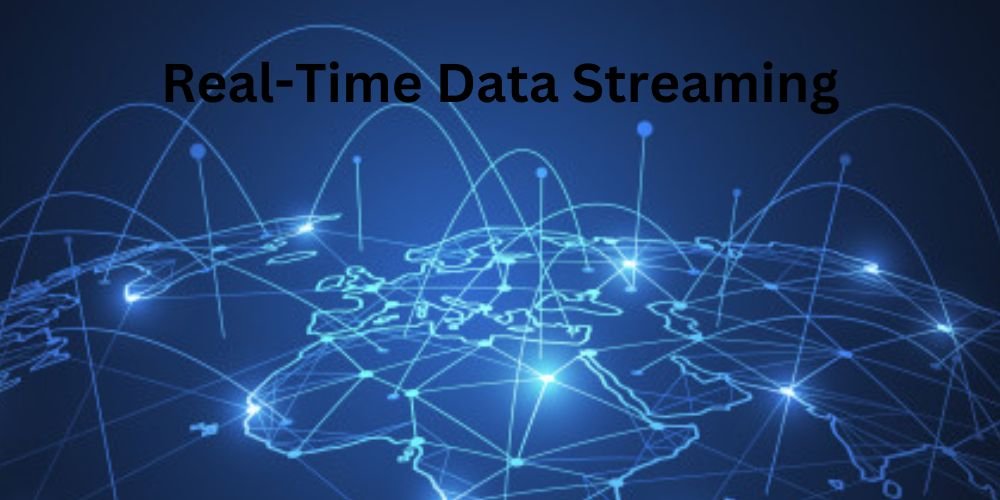Real-time data streaming has become a critical component in today’s data-driven world, enabling organizations to process and analyze data as it is generated, leading to rapid insights, actionable intelligence, and enhanced decision-making capabilities. This comprehensive exploration delves into the intricacies of real-time data streaming, unraveling its fundamental principles, key components, recent innovations, notable applications, and its transformative impact on reshaping the landscape of data analytics and business operations.
Understanding Real-Time Data Streaming
Real-time data streaming involves the continuous and uninterrupted flow of data from sources to destinations, where data is processed, analyzed, and acted upon in near real-time. This streaming approach allows organizations to handle large volumes of data efficiently, enabling timely insights and responses to dynamic events and trends.
Key Components of Real-Time Data Streaming
The core components of real-time data streaming contribute to its functionality and effectiveness in data processing and analysis:
- Data Sources: Provide the initial data streams, including sensor data, log files, social media feeds, financial transactions, and more.
- Data Streaming Platforms Serve as the infrastructure for ingesting, processing, and analyzing data streams in real-time, offering features such as scalability, fault tolerance, and low latency.
- Stream Processing Engines: Execute data processing tasks, such as filtering, aggregating, and enriching data streams, allowing for complex analytics and event-driven actions.
Recent Innovations in Real-Time Data Streaming
Recent innovations have propelled real-time data streaming to new heights, enabling organizations to harness the power of data in unprecedented ways. Notable advancements include the adoption of event-driven architectures, the integration of machine learning, and the use of edge computing.
Event-Driven Architectures
Adopting event-driven architectures enables organizations to build responsive and scalable systems that react to events and triggers in real-time. This allows for dynamic data processing and automated actions based on changing conditions.
Integration of Machine Learning
Integrating machine learning algorithms into real-time data streaming platforms enables organizations to perform advanced analytics, anomaly detection, and predictive modeling on streaming data, facilitating insights and actions in real-time.
Edge Computing
Using edge computing technologies allows organizations to process and analyze data closer to its source, reducing latency and bandwidth requirements and enabling real-time decision-making at the network edge, where data is generated.
Notable Applications of Real-Time Data Streaming
Real-time data streaming has diverse applications across various industries and domains, contributing to improved efficiency, responsiveness, and innovation in business operations.
Financial Services
In the financial services sector, it is used for algorithmic trading, fraud detection, and risk management. It enables organizations to react to market events and anomalies in real time to optimize trading strategies and mitigate risks.
IoT and Smart Cities
In the Internet of Things (IoT) and smart cities initiatives, real-time data streaming enables the monitoring and controlling of connected devices and sensors, facilitating predictive maintenance, traffic management, and public safety initiatives based on real-time insights and analytics.
Challenges in Real-Time Data Streaming
Despite significant advancements, real-time data streaming faces challenges that impact its widespread adoption and effectiveness in data-intensive environments. Addressing these challenges is crucial for ensuring reliability, scalability, and security in real-time data processing and analysis.
Scalability and Performance
Handling large volumes of data streams in real-time requires scalable and performant infrastructure, including distributed systems, parallel processing, and load balancing mechanisms, to ensure responsiveness and reliability under high data loads.
Data Quality and Governance
Maintaining data quality and governance standards in real-time data streaming environments poses challenges, such as ensuring data consistency, accuracy, and compliance with regulatory requirements, necessitating robust data validation, cleansing, and lineage tracking mechanisms.
Future Trends in Real-Time Data Streaming
The trajectory of real-time data streaming indicates exciting trends that will further redefine its capabilities and applications in data analytics and business operations. These trends promise to enhance intelligence, automation, and agility, ushering in a new era of real-time decision-making and innovation.
Autonomous Data Streaming
The emergence of autonomous data streaming technologies enables organizations to automate data ingestion, processing, and analysis tasks, leveraging AI and machine learning algorithms to optimize data pipelines, detect patterns, and trigger actions in real time without human intervention.
Continuous Intelligence
The adoption of continuous intelligence approaches enables organizations to derive insights and make decisions in real time based on streaming data. This facilitates proactive responses to changing conditions, trends, and events and drives innovation and competitive advantage.
Conclusion
Real-time data streaming is a cornerstone of modern data analytics and business operations, enabling organizations to harness the power of data for rapid insights, actionable intelligence, and informed decision-making. From financial services to IoT and smart city initiatives, the impact of real-time data streaming extends across diverse industries and domains, reshaping how organizations leverage data to drive innovation, efficiency, and competitiveness. Despite challenges, ongoing innovations in event-driven architectures, machine learning, and edge computing promise a future where real-time data streaming continues to push the boundaries of what is possible in data analytics and business operations, unlocking new opportunities for intelligence, automation, and agility in a rapidly evolving digital landscape.










